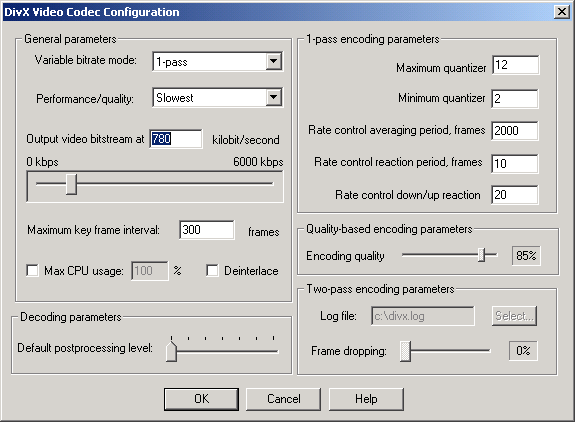Faster Than Real-Time: MPEG-4 Encoding With DivX 4.11
Athlon XP Has SSE, So Does That Make It Faster?
Prior to performing this test, we ran comprehensive tests and evaluations of alternative conversion software. Our goal was to prove that if specific software has been optimized for SSE, the Athlon XP (Palomino) and the Duron with a Morgan core should also see some improvements. After all, the latest AMD processors also make use of the SSE command set expansion. Lo and behold - we were right. Once DivX 4.11 was released, the software situation changed, just like that. In addition to correctly "steering" codecs optimized for SSE, such as DivX 4.11, another revolutionary feature joined the fray - the use of so-called "YUV" color space instead of the older standard "RGB," which makes converting DVD/MPEG-2 to MPEG-4 faster than greased lightning. Let's look at what makes it so much faster.
DivX 4.11 - Same Shell, New Core
We were disappointed by the physical appearance of the configuration menu on the new DivX 4.11. It looks like a carbon copy of the 4.02 version that we had already been using. However, the engine under this version's hood turned out to be a completely souped-up data churner. By the way, the settings shown in the screen shot are our test settings. Please note that the performance/quality parameter is set to "slowest." This allows us to attain the highest-quality image, depending on the bit-stream rate set. All of our subsequent benchmark comments refer to "slowest." Setting performance/quality to "fastest" will automatically increase all the frame rates measured. But Tom's Hardware is famous for subjecting many products to a stress test and a worst-case scenario test before coming to any conclusions. So these settings are, in our view, representative for most quality-conscious users.
Get Tom's Hardware's best news and in-depth reviews, straight to your inbox.
Current page: Athlon XP Has SSE, So Does That Make It Faster?
Prev Page Introduction Next Page DVD2AVI 1.76 - Robust And Fast, But Rough At The Edges
